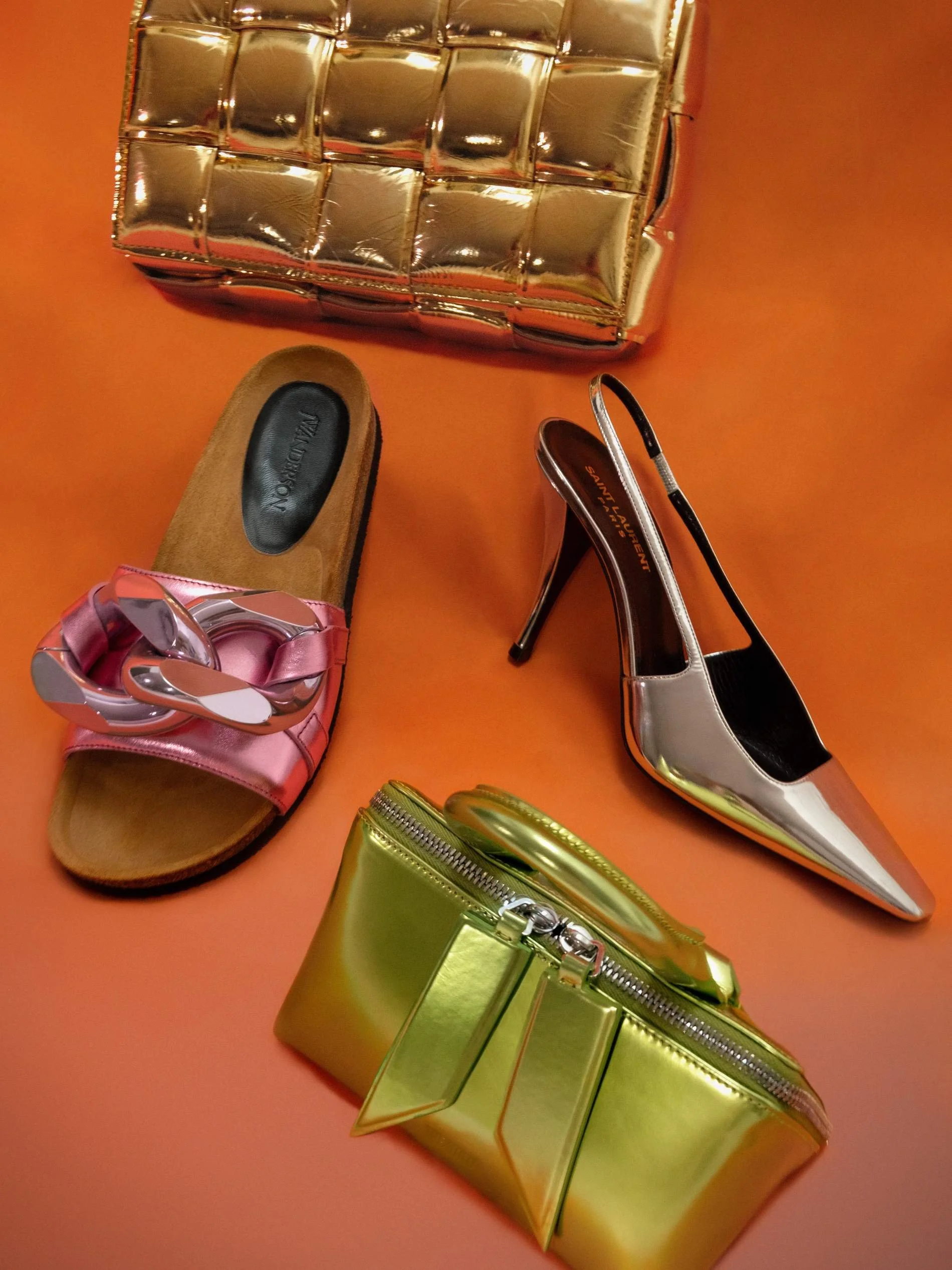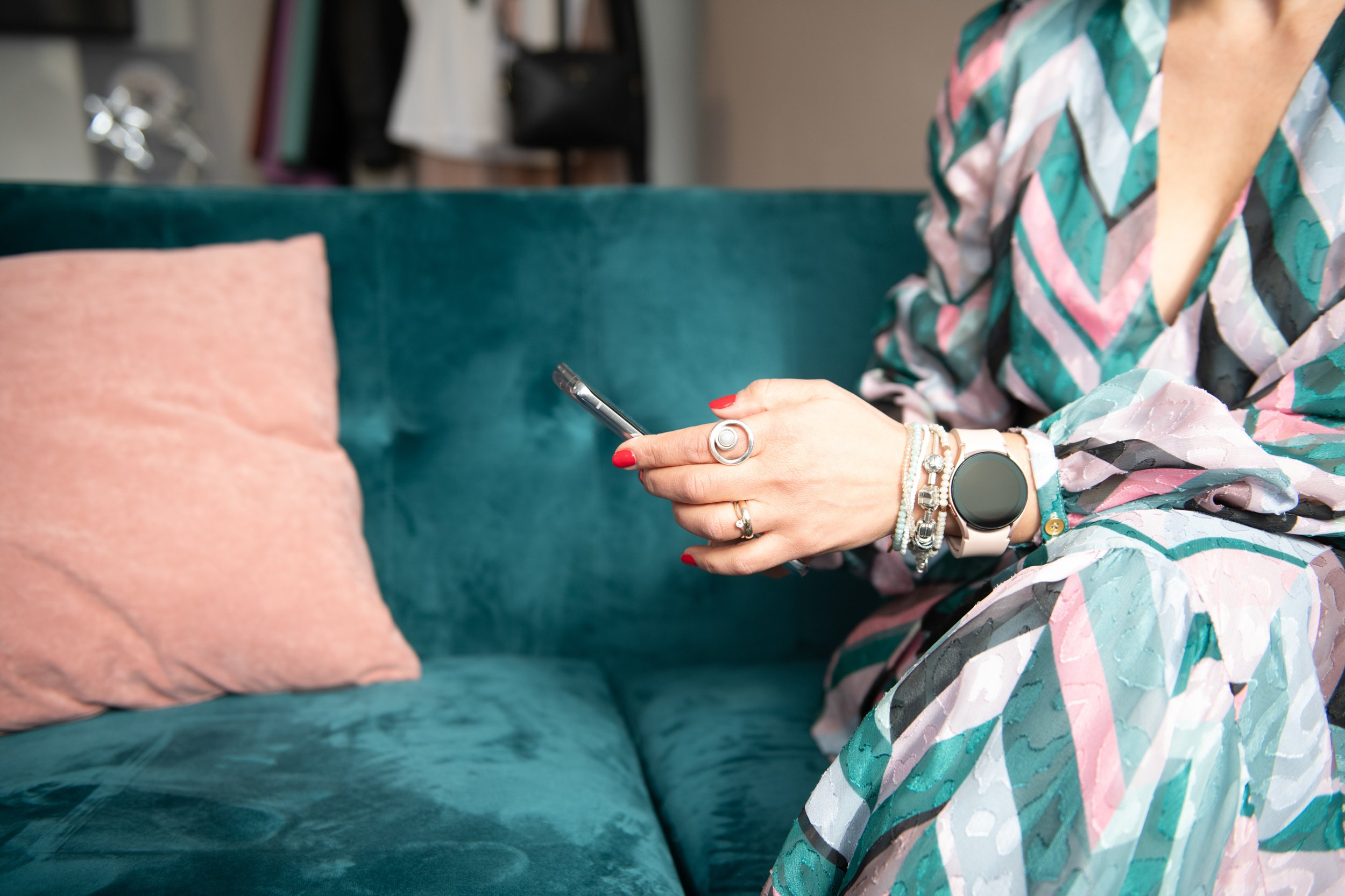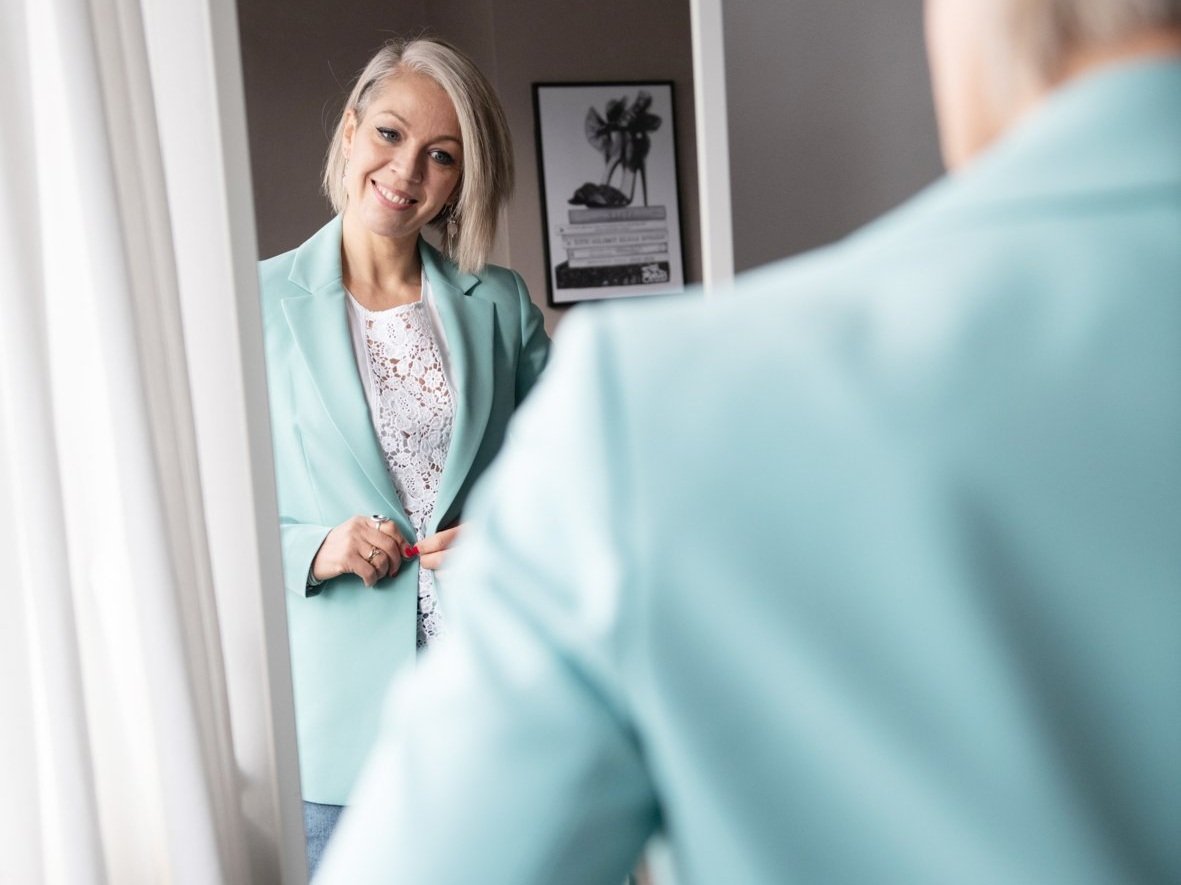
WELCOME TO ONE OF A STYLE BLOG
PERSONAL STYLIST TIPS: FASHION TRENDS FOR SPRING 2024 AND DRESSING FOR YOUR BODY SHAPE
If you’re looking for the latest trends for Spring, and want to try them out for yourself, I have created this article sharing 6 of my favourite trends for Spring 2024, and how to style them for your body shape. PLUS I have included a mini guide on styling your body shape for any look so you can create outfits that you feel your best in.
Understanding our body shape is not just about embracing who we are; it's also about empowering ourselves through fashion choices that highlight our best features. As we step into Spring 2024, it's the perfect time to refresh our wardrobes with the latest trends while staying true to our unique silhouettes. Let's explore the fusion of fashion and body positivity to create looks that exude confidence.
But before diving into the spring trends, let's revisit the fundamentals of body shapes. From Triangle and Inverted Triangle to the Neat and Full Hourglass, each silhouette tells a unique story. Rectangles boast balanced shoulders and hips with a straight waist, while Ovals embrace curves around the middle. Meanwhile, Triangles and Inverted Triangles play with the interplay of wider hips or shoulders, defining their distinctive contours. Let’s explore the upcoming trends and how these can complement the different body shapes.
Spring 2024 Fashion Trends
Let's unveil the top trends dominating the Spring 2024 runways and explore how to tailor them to your body shape:
1. Crisp Lines and Geometric Patterns:
Angular Body Types (such as Inverted Triangles, angular Rectangles and Neat Hourglass) can embrace structured shapes and geometric patterns to complement their features.
Top Tip: Opt for crisp fabrics and constructed silhouettes to add enhance your look. Embrace stripes, checks, and angular designs for a modern edge.
2. Soft Fabrics and Romantic Patterns:
Curvilinear Body Types (Like Full Hourglass, Triangle, and Oval) thrive in soft, fluid fabrics and romantic patterns that enhance their natural curves.
Top Tip: Choose fabrics that drape gracefully over your figure, such as silk and jersey, viscose or soft knitwear, and embrace floral motifs, paisleys, and polka dots to complement your body features.
3. Deconstructed Shapes and Fluid Layers:
Oval and Curvilinear Rectangle Body Types can explore deconstructed shapes and fluid layers at the top, to create the illusion of longer torso, and create interesting looks without adding too much unnecessary volume.
Top Tip: Opt for cardigans, waterfall jackets, and wrap tops in soft, flowing fabrics. Keep the lines straight and simple to flatter your silhouette.
4. Short Shorts:
Inverted triangles can add volume to their lower half with shorts that have larger pockets or are a paper-bag style; while hourglass shapes can taper in at the waist with a belt.
Top Tip: Pop on a pair of tights in the same colour as your shoes to elongate your legs, or pop on a pair of nude shoes for the same effect.
5. High Rise Trousers:
Super flattering for many body types, this high rise trouser trend can be worn at work or for play. For triangles, opt for a wide-leg that glides down past your hips; while for rectangles and inverted triangles you can opt for a cargo-style pant to add some definition to your hips.
Top Tip: if you are wearing a wide leg or baggier style, look for a tighter top to bring you in at the waist.
6. Metallics
Depending on your skintone, you can play with rose gold, silver, gold, or bronze. As a general rule of thumb, gold tones are best for warm-toned skin, while silvers complement cooler tones.
Top Tip: You can go all out with the trend and dress up in a metallic gown (perfect for a special night out), while touches of the trend can be added to your look through accessories such as hair bands, your purse, shoes, or layering.
Dressing for Your Body Shape
Now that we've decoded the trends, let's discuss how to dress for your specific body shape:
Neat Hourglass: Emphasise your defined waist with clothes that highlight your mid-section and natural overall proportions. Opt for waist-defining pieces and avoid shapeless garments.
Full Hourglass: Follow your body's natural curves with soft, flowing fabrics and gentle silhouettes, while enhancing your waistline. Avoid heavy or stiff materials that may constrict your figure or oversized and boxy shapes that would add unnecessary volume, hiding your natural body balance.
Oval: Create the illusion of verticality with long coats and jackets, and create vertical lines with your clothes. Choose straight clothing lines and soft fabrics to minimize bulkiness around the middle. Focus the attention to your face and top bust, and to your legs and feet through the use of colours, accessories, and jewellery.
Rectangle: Add subtle details to create the appearance of curves, and go for shapes that create the illusion of a longer bust. Minimise the details and volumes at the central torso, while focusing on hip and bottom with colours and details.
Inverted Triangle: Highlight your hips and bottom to balance your silhouette, playing with fabrics, volumes and details, while keeping your shoulder details minimal and opt for clean, sharp lines in your clothing.
Triangle: Draw attention to your upper body with voluminous shapes and bold patterns and colours, as well as accessories and jewellery, and balance your figure with structured tops and more streamlined bottoms, to complement your curves. Waist is usually very defined in triangles, so highlight it as much as possible, as your point of strength.
As we embrace the fashion trends of Spring 2024, let's celebrate our individuality by dressing for our unique body shapes. Whether you're a Triangle, Oval, or anything in between, confidence is the ultimate accessory.
Remember, fashion is not about fitting in; it's about standing out and owning your style with pride.
So, let's step into the new season with a renewed sense of self-assurance and flair!
PERSONAL STYLIST TIPS: UNDERSTAND BODY SHAPES AND HOW TO DRESS FOR CONFIDENCE
Understanding our body shape is crucial if we want to feel more confident with what we wear. Apart from the shape and the proportions of our body though, it is absolutely important to consider how to dress all the individual parts of your body, rather than the entire body all at once. One of the first things I do with clients is to determine their features, so if they are angular or curvy, some people might have a mix and so be interjacent. So how do you know which one you are? I share my advice in this article.
Understanding our body shape is crucial if we want to feel more confident with what we wear. Apart from the shape and the proportions of our body though, it is absolutely important to consider how to dress all the individual parts of your body, rather than the entire body all at once. One of the first thing I do with clients is to determine their features, so if they are angular or curvy, and some people might have a mix and so be interjacent.
This helps to point in the right direction for choosing the best clothes, and fabrics to complement and suit our body to the best. Crispy fabrics and structured shapes, but also geometric (popelin shirts, cottons, structured blazers and jackets, geometric patterns, etc..) will suit best angular body features, while deconstructed shapes, soft fabrics and patterns (jerseys, viscose and silk, blouses, and “romantic” patterns like paisley, dots and flowers) will complement best curvilinear body features.
In order to determine if our features are angular, curvilinear or interjacent, a little exercise to do is to stand in front of a mirror in clothes that show your shape off. Look at your shoulders, are they straight across or do they slope down? Then, stand sideways, still looking into the mirror: do you have a straight back and flat bottom; or do you have a curved back and curvy bottom? Once you have determined which bits of you are straighter or curvier, you need to consider the actual construction of your clothes. Angular bodies, or sections, need straighter constructions; curvier bodies need softer and more shaped constructions. Interjacent people, will have to choose different clothing lines and structures depending on the different sections of their body.
Now, let’s dig into the body shapes: there are 6 different kinds of body shapes:
TRIANGLE (or so-called pear), INVERTED TRIANGLE, RECTANGLE, OVAL (or so-called apple), NEAT HOURGLASS and FULL HOURGLASS.
The difference stands mainly in the proportions between shoulder, hips and waist: when shoulder and hips are balanced (same width) they can either have a defined waist or a non-defined waist. In the first case, most luckily we deal with an hourglass (that can be neat or full..will explain more later on) while a non-define waist means we have either an oval or a rectangle body shape.
When the shoulders are wider than the hips, we are in front of an inverted triangle, as opposed to the triangle, where the hips are wider than the shoulders.
Now, let’s see shape by shape what this means:
1. Neat Hourglass: is characterized by a defined bust a defined waist, a neat bottom, and neat hips and have a naturally balanced body and also a defined waist, and while they have a wide range of choice, in terms of clothing styles, they should always try to keep this balance and also, and show off their body by wearing clothes that define the waist, enhance the bust and highlight hips and bottom. While they should avoid wearing clothes that hide their body line. So anything with waist definition is a “go-to”, while buggy, boxy and shapeless clothes are not recommended. Neat Hourglasses can wear most fabrics and patterns, as long as they complement their features (angular, curvilinear, interjacent).
2. Full Hourglass: you don’t hear about this body type often, many just talk about the “hourglass” generically, but some women, still having balanced shoulders, hips and a defined waist, have a full bust, a rounded bottom, and rounded hips and for them, rules differ a bit from neat hourglasses, and it’s important to wear clothes that follow their body line and curves, instead of those that are straight and constricting. In this case, I recommend choosing fabrics carefully and avoiding heavy or stiff fabrics, but rather opt for fluid, soft fabrics and more deconstructed shapes, like waterfall jackets, cardigans (and knitwear in general), crossovers or wraps tops and dresses, in soft fabrics, and as for patterns it’s preferable to avoid geometric patterns, and instead opt for more fluid shapes (spots, florals, paisleys).
3. Oval: usually has rounded or sloping shoulder line, curved back, flattish bottom, fullness around the middle and indeed the critical area is the central torso. My best recommendations for oval body shapes are:
-Draw eye attention to the area above your bust and below your hips. In order to do that play with accessorise (scarves, necklaces, earrings, hats) so keep any detail above the bust line and below the hip line.
-Create the impression of a slimmer body, so create optical verticality through the use of shapes and clothing lines. Wearing coats/jackets or cardigans which are longer than the hips line is a great way to do this.
-Clothing lines need to be straight, and fabrics soft to avoid any unnecessary volume or bulkiness.
-Opt for deconstructed shapes, simple lines and plain colours on the bust.
-Choose soft, fluid fabrics that hang well and don’t cling or hug the figure, and go for muted and subtle patterns.
4. Rectangle: Once again, hips and shoulders are balanced, but the waist is straight and undefined. Rectangle body types usually have flat hips and a flat bottom, however, some Rectangles can have a fuller bust, which gives a softer edge to their shape. Their main aim is to soften those edges even more and create the appearance of curves. This body type is characterized by a straight shoulder line, straight hips and bottom, very little waist definition, straight ribcage. I recommend using details on hips and bottom to create shape while avoiding details at the waist (such as noticeable waistbands or belts) and keeping the clothing line straight and structured. Most Rectangles can wear crisp fabrics, but those with a full bust, need to opt for softer fabrics, and generally geometric patterns work best for them.
5. Inverted Triangle: in this case, shoulders are wider than hips, and the waist is not defined. The body type is characterized by a straight and squared shoulder line, with flattish hips and bottom. I recommend highlighting the hips and bottom, focusing all attention below the waist. Shoulders are generally straight and squared, while hips and bottom are quite flat. Inverted triangles need to minimize details on their shoulders and keep this area as simple as possible while focusing the attention on their legs through, shapes, colours and details. Clothing line needs to be straight, clean and sharp. Halter neck is their neckline! jackets should be constructed and shaped with angular lines (like revered collars) and with no belts, while skirts should be straight and trousers used to add details to the legs and bottom (classic jeans are a perfect style!). I also recommend crisp, constructed fabrics and geometric patterns (like stripes and checks)
6. Triangle: as the name suggests, the bottom part is wider than the top, so the shoulders (and the top half in general) appears smaller than hips and the bottom part of the body, and usually the waist is well defined while shoulders may be slope. As opposed to Inverted Triangles, Triangles need to focus the attention on the top part of their body, through shapes, volumes, details, patterns and colours, and create the optical illusion of wider shoulders, while enhancing their waist with belts and waist-cuts, and minimize details and volume at the bottom. Soft, fluid fabrics work best for the bottom half, while it is recommended to opt for more volume and structure on the top part, to create a balance.
These are general guidelines, but everyone has their own, unique body and features, and there might be differences between two or more people fitting into the same body shape category. So while these tips can help to understand the different body types, it is always preferable to ask the help of an expert that can give personalized and customised advice.
This is an extract from the article published on Pick Me Up! Magazine 3 March issue
Publication: Pick Me Up! Magazine (c: 55,608) - Your Style - Dressing for you. Date: 3 March 2022.
If you would love to help in discovering the best outfits for your body shape, I’d love to help. Get in touch to find out more about my personal style masterclass and personal styling services.











